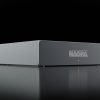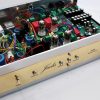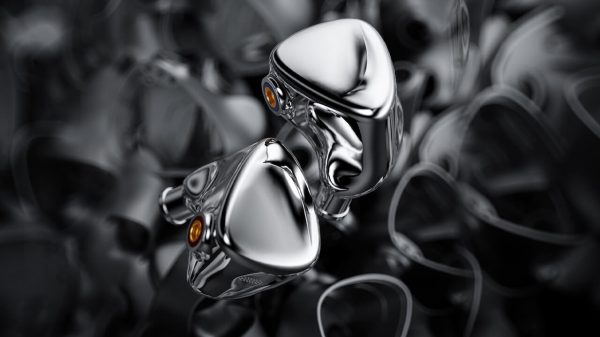The end of the Cold War and collapse of the Iron Curtain brought more than just political freedom to Eastern Europe and the Balkans; it created an environment for entrepreneurship and design innovation that has had a profound impact on the culture and economic future of the region. Products like the Meze Audio Advar may only be a tiny example of that reality but they demonstrate just how much engineering skill was suppressed by Communism in Eastern Europe for decades.

Started in 2009, Meze Audio began its journey into the world of headphones in Baia Mare, Romania; a city of 136,000 people located less than thirty miles from the border with Ukraine.
The creation of a new middle class fueled demand for western consumer goods, but more importantly, led to investment in domestic start-ups who have proven capable of competing with well-established brands from America, Western Europe, and Asia. Companies like Meze Audio who have exceeded every possible expectation.
Over the past two years, I have had the opportunity to review several of the Meze Audio products ranging from the budget beating 12 Classics V2 IEMs, 99 Classics, Rai Penta, LIRIC, and the flagship Empyrean and Elite models.

The 99 Classics were a hit after the team showed up at CES and actually passed them around to the companies demonstrating headphone amplifiers; the walnut cups, steel headbands with gold accents, and leather suspension took the industry by storm. EIC Ian White uses his personal pair every single day and considers them to be one of his favorite all-time headphones.
The $299 USD asking price was shockingly low when one considers what AKG, Sennheiser, Grado, and Beyerdynamic were asking for comparable models at the time; the exercise was designed to get the brand on the map and let the headphone world know that a small Romanian company was engineering very high-end headphones across the world at a price that most people could afford.

The arrival of the Meze Audio Empyrean changed everything for the company; they went from being a small company competing with large mainstream brands for a piece of the $300 to $400 category to a bespoke manufacturer of one of the best headphones ever created.
We don’t throw that praise around lightly; the Empyrean, which was designed in partnership with Rinaro Isodynamics in Ukraine, became an overnight success in the luxury headphone category unseating award-winning headphones from Audeze, HiFiMAN, Dan Clark Audio, and Senneiser.
The sound quality was more than enough to make the Empyrean a must-listen at every Head-Fi CanJam event, but what really took people by surprise was the industrial design and how that impacted the weight.
Full-sized planar magnetic headphones were rather heavy items to wear on your head for extended listening sessions, but that all changed with the launch of the Empyrean.
I’m not sure if Meze are marketing the Advar as the IEM version of the 99 Classics but it is something to think about as we take a closer look at these IEMs.

Antonio Meze has always put a lot of effort into the unique industrial design of his products and also the branding. The Meze Audio Advar IEMs were inspired by the Romanian word for “Amulet,” or “Talisman” and it is thought that the Advar is meant to bring those who wear it happiness, good health, and a sense of balance in life.
Balance is the key word in all of this.
The Skinny
Nothing that comes out of Baia Mare is anything less than inspired looking and that is certainly true of the shells that are polished steel with rather graceful curved lines and organic looking shape. A brass disk that sit overs the 10.2mm dynamic driver houses a single vent which is centered over the driver. A brass nozzle complements the dark gray steel finish.


The cable attaches via MMCX connectors with the Meze Lyre logo down the back of the shell below the connector. Five sizes of Final E Series tips are provided along with a leather clamshell case, MMCX tool, cleaning brush, cable, and manual. The cable is terminated with a gold plated 3.5mm plug.
My review kit also came with a second cable in its own leather storage bag. Aside from the jacks, the two cables are identical with one having a 3.5mm jack and the other a 4.4mm termination.

The cable itself is silver plated OFC in a 4 strand braid from the jack to the splitter and two wire twists above. The jack and splitter are both gray steel matching the earpieces while the MMCX housings are clear polymer at the top end.
Sound
The dynamic driver has a nominal impedance of 31 ohms and a sensitivity of 111dB/mW per Meze and I found it easy to drive. Smartphones should be fine driving these IEMs but you will be sacrificing resolution, clarity, and detail without a Dongle DAC.

Driven by the brand new Astell & Kern KANN MAX, the low gain setting was adequate for normal listening and those who prefer to listen at louder volume levels would have adequate headroom on medium gain.
Even using the original Cayin N3 DAP, which is known for its lower than average output, I had no problem getting the Advar to normal listening levels with no loss of detail or transparency.
The Advar is best described as a “W” signature with emphasis in the bass, upper midrange, and the mid treble.
The extreme low end has good impact but it is not as tightly defined as some of its rivals like the Sennheiser IE 600. The mid bass gradually drops back from a peak and does bleed somewhat into the lower midrange which gives the Advar slightly more warmth and fullness.
The lower midrange is slightly recessed sounding but still has enough weight and detail to not feel lacking. Male vocals do not have the same energy or presence of their female counterparts which benefit from more emphasis in the upper midrange.
That lift in the upper midrange results in violin strings that have a very natural sounding timbre and notes that are well rendered and detailed.
The treble is similar to all of the other Meze Audio IEMs that I’ve tried so far; slightly polite sounding to avoid any hint of stridency or fatigue. There is certainly enough energy for snares to sound quite realistic but I found that cymbals did not sound quite as crisp in comparison to some other rivals.
The tuning is definitely a design choice by Meze and not a shortcoming of the driver; Meze prioritize a smoother sounding treble with a reduction in energy for a more relaxed listen that never sounds hard even if the recording is mixed that way.
The soundstage is surprisingly much larger than I anticipated for a closed IEM; there is a very good sense of depth and width with a moderate degree of height. I also found the instrument separation to be very good, although the imaging is not as precise and carved firmly in place as the Sennheiser IE 600; the Advar is a more organic sounding IEM in comparison to the IE 600 which prioritizes neutrality.

Conclusion
I mentioned at the onset that the concept of balance was very important when discussing the Meze Audio Advar. Using the Meze 99 Classics as a point of reference, the Advar has a strong low end, greater dynamic capabilities, and better driver speed which also results in more detail.
It delivers more upper midrange clarity, and slightly more top end extension; which is slightly remarkable coming from a single 10.2mm driver integrated inside of an IEM.
The shell is beautifully made and everything about the overall package feels well designed and executed. I do wish there was a balanced cable option, but that doesn’t take away from the quality of the Advar which is one of the best products from Meze Audio so far. The asking price isn’t entry-level but you most certainly get what you pay for.
Where to buy: $699 at Crutchfield | Audio 46


































